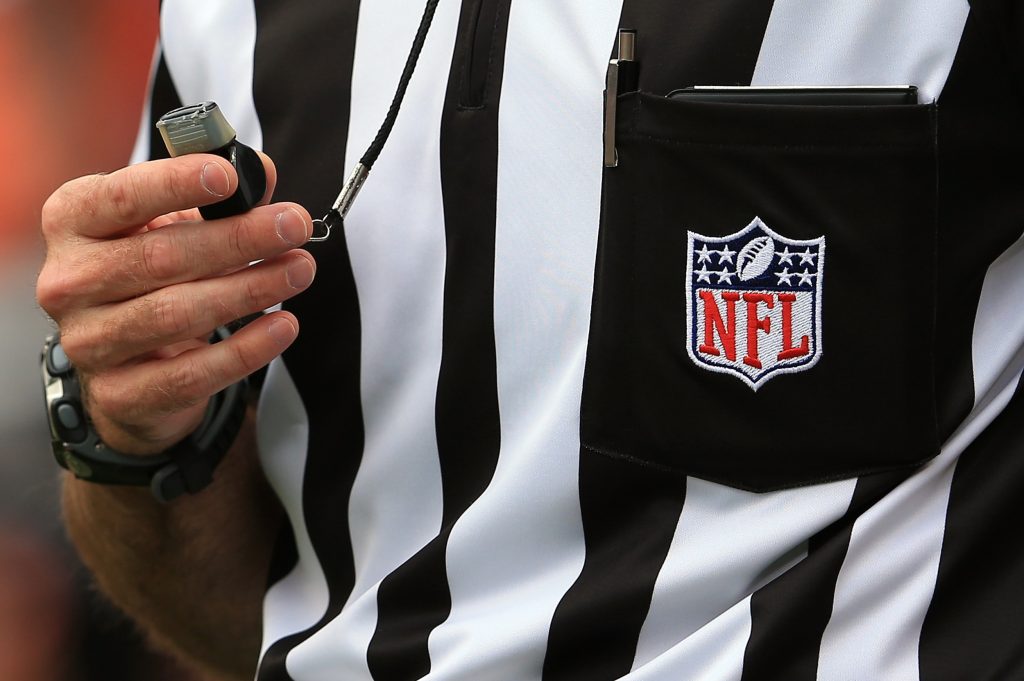The National Football League (NFL), despite advancements in technology and mounting controversies surrounding on-field officiating, maintains its stance that human judgment remains indispensable in determining the spot of the football during plays. While the league is actively exploring and integrating new technologies to enhance the accuracy and efficiency of officiating, particularly regarding line-to-gain measurements, the core responsibility of spotting the ball will remain with on-field officials. This unwavering commitment to the human element stems primarily from the complexity of determining forward progress, a nuanced aspect of the game that technology is not yet equipped to handle effectively.
The recent AFC Championship Game provided a stark illustration of the challenges in determining forward progress, igniting further debate on the issue. A crucial fourth-down play involving Josh Allen, where he appeared to gain sufficient yardage but was deemed short, highlighted the limitations of current technology in capturing the intricacies of on-field action. The play, which was reviewed and upheld, ultimately shifted the game’s momentum in favor of Kansas City, solidifying the importance of accurate forward progress decisions. This controversial call underscores the NFL’s argument that the human element remains vital in assessing such plays, given the complexity of player momentum, contact, and the often-imperceptible forward progress made in a fraction of a second.
The NFL is currently evaluating Sony’s Hawk-Eye tracking system, a technology with the potential to significantly improve the speed and precision of line-to-gain measurements. This system, which utilizes advanced tracking technology, would instantaneously inform officials whether a first down has been achieved, but only after the ball has been manually spotted by an official. Essentially, the technology serves to measure the distance from the spotted location to the first-down marker, streamlining the process and potentially eliminating the need for the traditional chain gang. While the chain gang would remain as a backup option, the Hawk-Eye system could drastically reduce the time required for measurements, potentially cutting it down from an average of 75 seconds to a mere 35 seconds, thereby improving game flow and reducing delays. However, the NFL emphasizes that even with the implementation of such technology, the crucial initial step of spotting the ball, and by extension determining forward progress, will remain under the purview of human officials.
The league’s commitment to human judgment in this area stems from the recognition that forward progress involves more than simply determining a player’s location at the point of contact. It requires an assessment of the player’s momentum, the impact of defensive pressure, and a holistic understanding of the play’s development, elements that current technology cannot fully grasp. This reinforces the NFL’s position that incorporating technology is not about replacing officials, but rather providing them with tools to enhance their decision-making. The human element, particularly in assessing dynamic and rapidly evolving plays, is considered crucial to the integrity of the game.
Although the NFL is exploring and implementing various technological advancements to improve officiating, the focus remains on augmenting, rather than replacing, the role of human officials. The league has already integrated Zebra microchips into footballs, enabling the collection of detailed player and team performance data for its Next Gen Stats platform. However, the precision of these chips is not yet sufficient for officiating purposes, particularly in determining the exact point of tackles or down-by-contact situations. Similarly, boundary line cameras installed in stadiums assist with replay reviews, but their usage is currently restricted to specific scenarios like scoring plays, turnovers, and situations within the final two minutes of a game. Any expansion of their role, such as for coaches’ challenges, requires approval from the Competition Committee.
Ultimately, the NFL’s approach to technology integration reflects a balanced perspective. While embracing advancements that can enhance efficiency and accuracy, the league remains steadfast in its commitment to the irreplaceable role of human judgment in critical on-field decisions, particularly those involving the nuances of forward progress. This cautious but progressive approach aims to improve the game without compromising the fundamental role of on-field officials and the integrity of the sport. The NFL recognizes that technology can be a valuable tool, but it must complement, not substitute, the human element that brings experience, understanding, and nuanced judgment to the complexities of the game.










